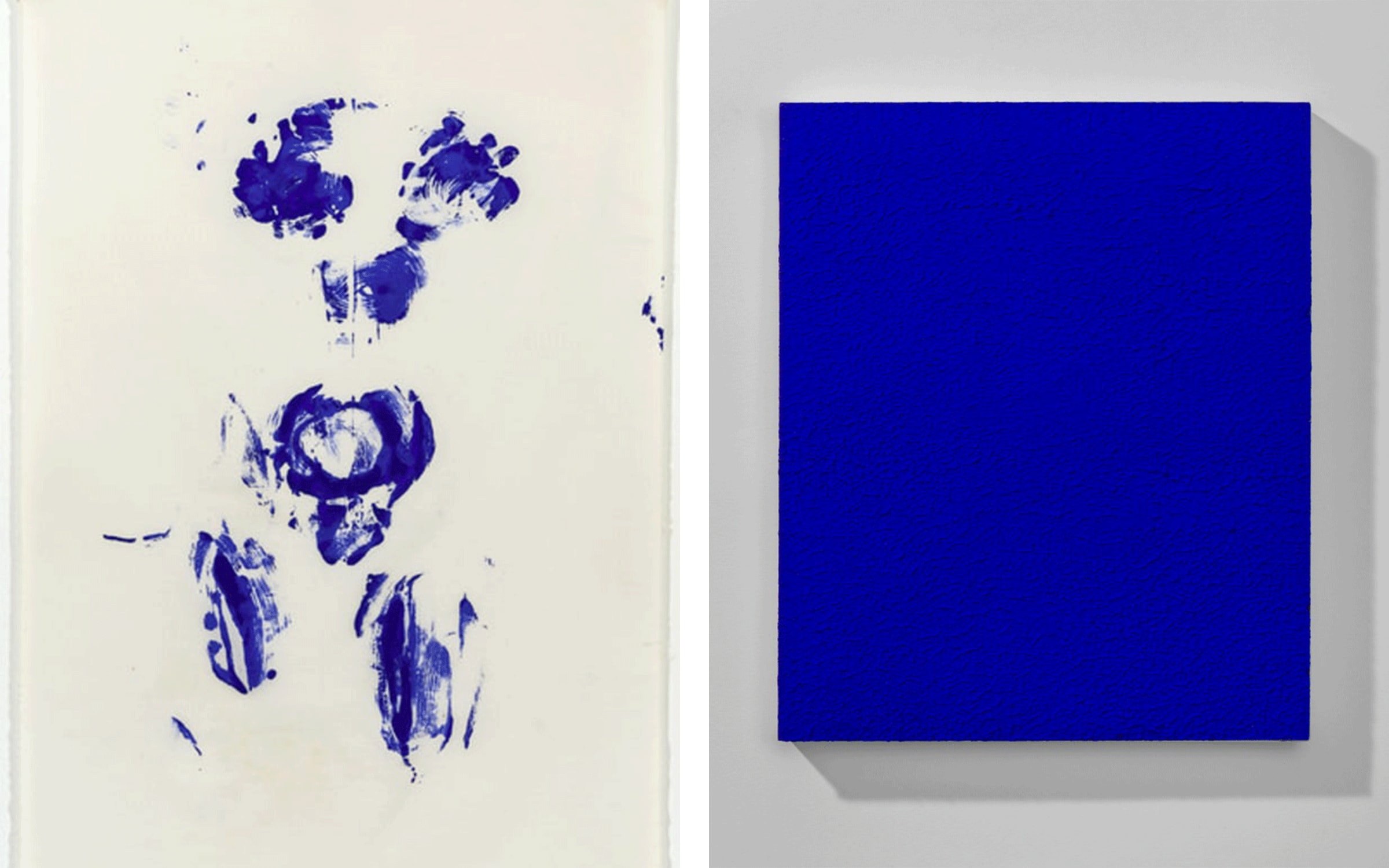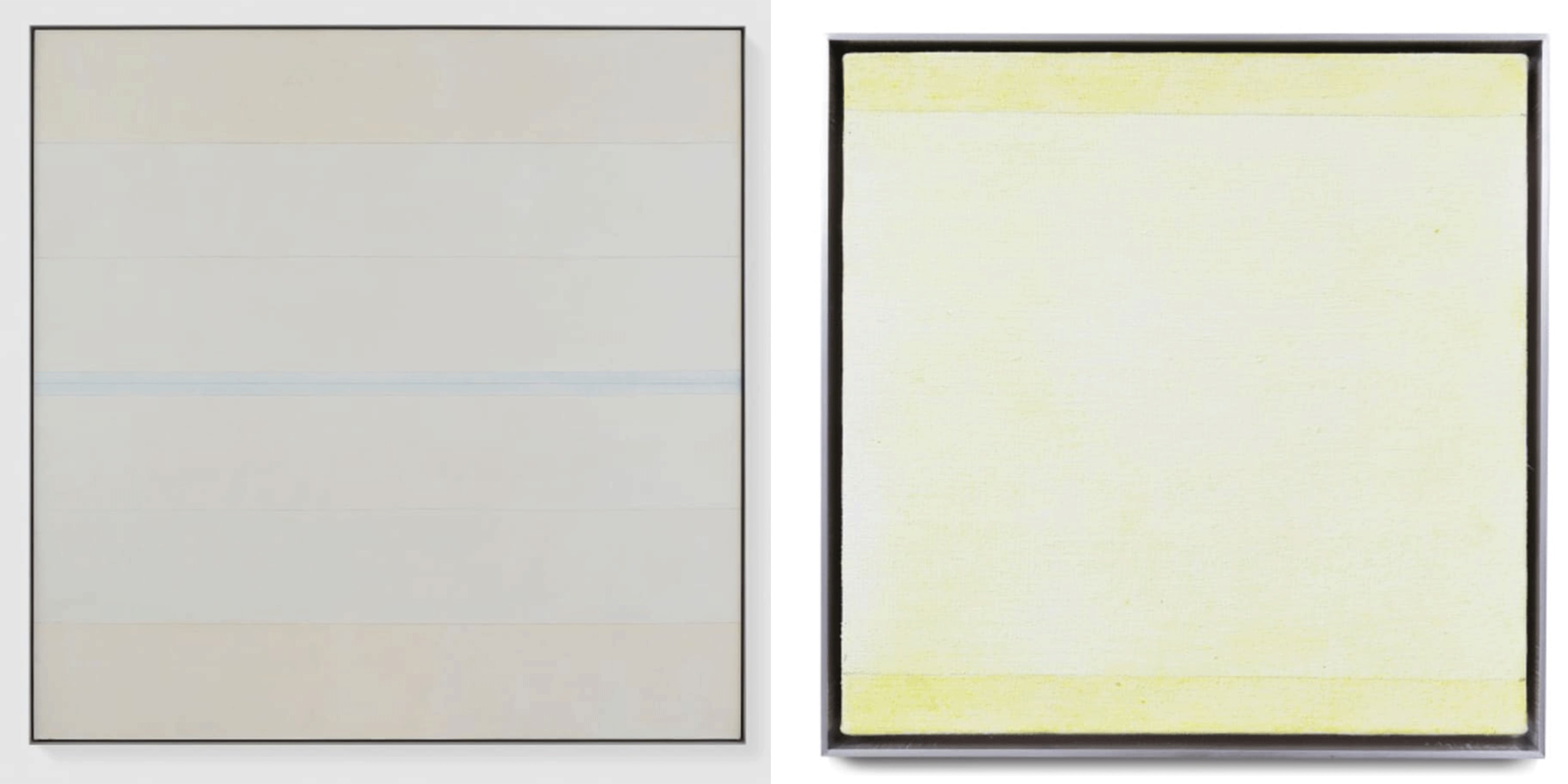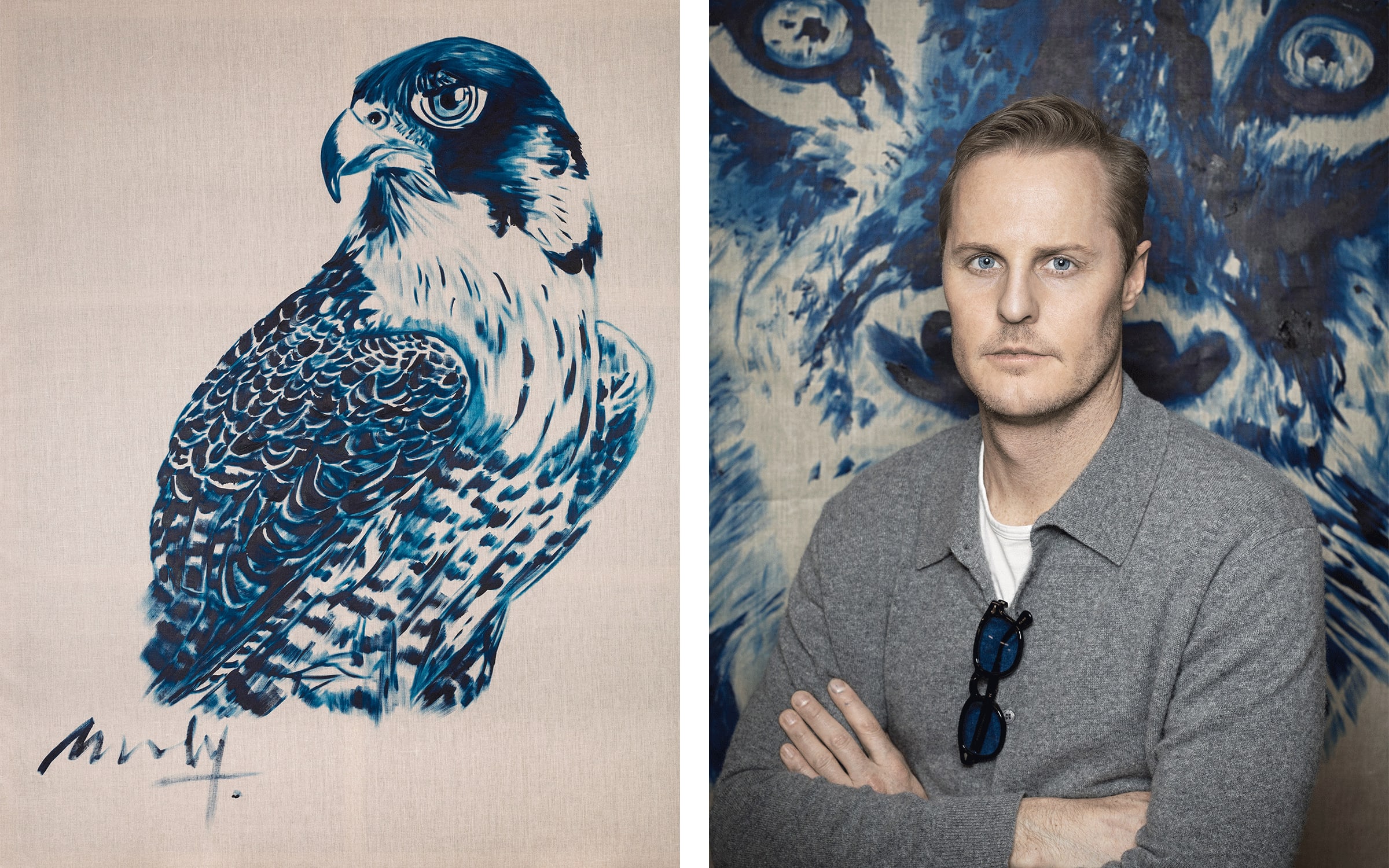Lounging on a French beach in 1947, three friends divided the world. The painter Arman chose the earth, the composer Claude Pascal chose words, and a young judoka called Yves Klein chose infinite space. While their machinations that afternoon were bombastic, Klein’s symbolic claim to the furthest reaches of the sky – ‘the side with no birds, no planes, no clouds, only pure and irreducible space,’ as critic Thomas McEvilley put it – anticipated a lifelong fascination with the boundless and immeasurable creative capacity of color.

‘It is without doubt through color that I have, little by little, become acquainted with the immaterial,’ Klein told his audience 12 years later during a lecture at the Sorbonne in 1959. According to Klein, best known for creating the signature pigment International Klein Blue (IKB), the juxtaposition of multiple colors on a canvas prevents its viewer from delving into ‘the sensitivity, the dominance, [and] the purpose of the picture,’ whereas ‘life and liberty’ dwell amidst pure color, particularly blue, which the artist described during his Sorbonne talk as being ‘beyond dimensions.’ The monochrome has historically possessed a paradoxical dynamic. At once mystical and concrete, it has been wielded by some artists to herald an end to illusionism, painting as nothing but itself.
On the other hand, it has offered countless others a means to navigate their explorations of metaphysical, spiritual, and immaterial concerns. The art historian Barbara Rose notes that the monochromatic is not a characteristic of style, but rather denotes a personal stance, a Weltanschauung; a view of the world that can either turn inwards towards questions of materiality and form or beyond the object to embrace transcendental concepts like emotion, spirituality, or purity. ‘Monochrome is fullness and void simultaneously,’ Rose wrote in 2006, ‘a moment of silence in a world of noise. It is specific and universal, tangible and immaterial. It is the ultimate paradox.’
Agnes Martin once claimed that she painted with her back to the world. For decades, the Canadian-American artist painted what appeared to be the same thing: ethereal gridded and lined paintings rendered in a pale, practically translucent monochromatic palette. True to her contention that art is a tangible embodiment of our emotions, Martin’s contemplative practice sought to translate wordless, silent experience into artworks that impart a sense of calmness and tranquility to their viewers. Like Klein, Martin was attracted to the expansive capacity of repetition, a boundlessness that she alternately described as ‘infinity,’ ‘joy,’ ‘bliss,’ and ‘the sublime.’ At times, she would wait weeks for the visions that guided her elegantly restrained works.

The appeal of working with the monochrome shows no signs of dissipating. Maria Taniguchi began painting her meticulously gridded brick paintings in 2008. Although her works have drawn formal comparisons to Martin, Taniguchi’s highly personal approach to the monochrome seems less interested in conveying universal states of human experience than articulating an individual, subjective sense of time. Painstakingly constructed brick by brick, the artist has described the process of creating these canvases as a form of ’emptying her mind,’ which enables moments of order and clarity amidst the myriad physical and perceptual impulses she experiences on any given day.
‘The brick paintings are my way of materially creating an inner logic,’ Taniguchi explained in an interview with Christina Chua, ‘over the years, they’ve become more like an organic entity, and a kind of nervous system or an armature for the rest of the work.’ This durational monochrome project embodies both the fullness and void that Rose describes; the physical and repetitive process of painting grids of small bricks clears the artist’s mind while also functioning as a kind of net that captures ideas that appear elsewhere in Taniguchi’s broader artistic practice, which also includes sculpture and video.
Contemporary artists can also limit their work, or a series of works, to one particular color to gesture towards broader social issues. While primarily associated with painting, artists also pursue monochromatic works in media such as sculpture, textile, and immersive installations. Cildo Meireles’s Red Shift (1967–1984) unfolds over three rooms: the first is a room full of red furniture and objects, followed by a space in which a tiny bottle has conceivably spilled a vast quantity of liquid onto the floor, while a final darkened room contains a running tap that gushes red water.
The color red’s association with blood, violence, or communism has led to political readings of the work, particularly as it was first conceived in the midst of a military dictatorship in Brazil. Meireles, however, claims the work was more invested in what he calls ‘chromopoetics’ – a term linked to perception and sensitization – than political allegory. Although not explicitly commenting on politics, according to art historian Camila Maroja, Meireles’s immersive use of the monochrome nonetheless contains an element of social critique through its staging of unusual spaces in which common logic and common sense no longer apply, thereby calling its inhabitants to question their immediate sense of reality.

A socially engaged ethos also motivates Conor Mccreedy’s new series of paintings, ‘Alter Ego Wildlife,’ which combines his painting practice with his signature color Mccreedyblue and a commitment to animal conservation. ‘The blue color can take on a symbolic significance, representing freedom, expansiveness, and limitless potential,’ Mccreedy explains. ‘As you contemplate it, you may find that your mind becomes filled with creativity and new ideas, as if tapping into a wellspring of inspiration and imagination. You may find yourself feeling more alive, more connected to the world around you, and more in touch with your own inner self.’ Exploring the relation between the self and the wild animal, Mccreedy’s new monochromatic paintings not only seek to elicit empathy for endangered animals but also to create scenarios in which his audience can see themselves reflected in them, whether through painting on a mirror or in the reflective glint of a rare blue sapphire embedded in the eye of a painted falcon.
Although limited to two dimensions for now, Mccreedy has been experimenting with expanding these works into the metaverse, generating AI animals in his Mccreedyblue that react to the energy of their human observers’ biometrics. These early forays into AI anticipate what Mccreedy hopes will be the world’s largest blue world in art. ‘I believe that the mystery of the color blue has always been the most powerful force behind the storytelling aspect of my work,’ Mccreedy says, ‘it has so much more depth than any other color. Having no limits remains a property still assigned to blue today […] Enlightenment through the liberation of a single color, blue, is a transformative experience that can open your eyes to the wonders of the universe and the limitless possibilities of the human spirit.’
Works from the series ‘Alter Ego Wildlife’ by Conor Mccreedy will be on view in the exclusive NetJets lounge located within the Collectors Lounge at Art Basel. More information about the presentation of Mccreedy’s work and NetJets can be found here.
Jesi Khadivi is a writer and curator based in Berlin.
Published on June 1, 2023.
Caption for full-bleed images, from top to bottom: 1. Conor Mccreedy, Acinonyx Jubatus Running. Photograph by Xandra Linsin. 2. Conor Mccreedy, Three Wize Monkeys Bonobo (Pan Paniscus) Kikazaru, Mizaru, Iwazaru. Photograph by Xandra Linsin. 3. Installation view of Maria Taniguchi’s exhibition ‘Figure Study’, Silverlens, New York, 2023. Courtesy of Silverlens New York. 4. Conor Mccreedy, Ancient amur lopard combined with arabic leopard. Photograph by Xandra Linsin.